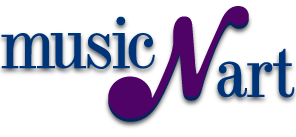
The electric bass is a stringed rhythmic musical instrument which produces low frequencies. It looks a lot like the electric guitar but with a longer neck. Within an orchestra it is meant to support the rest of the musical instruments by providing the rhythm. The electric bass was invented in the 1930s with the aim of replacing the double bass, unsuccessfully though. The flourishing of the rock music scene in the 1960s brought about its recognition by musicians. The electric bass is played with two fingers, in a horizontal position, and originally it had frets and four strings tuned exactly as the double bass. Later on, new, 5 or 6-strings bass models were created.
There are no different kinds of electric bass. What differs is the way the bassist plays the instrument. That is, by using the fingers, a pick, or by tapping it, depending on the music genre. With the bass one can play all genres of music! Rock, heavy metal, jazz, pop and even classical; there are no limitations! It is mostly an accompanying instrument, like percussion. It can however also produce melodies with the musician playing solo. The fact that it is an essential instrument in almost all genres, and that there are not enough bassists out there, make the bass even more valuable!
One may start learning the electric bass at the age of 7 years old. This varies according to the maturity and musical perception a child has developed until that moment. The child’s body type also plays an important role because the student’s little fingers must be able to strongly press and ‘slap’ the strings to produce better sound. As with almost all musical instruments, the lessons start by learning the notes, values and short easy pieces. It is recommended that in case a child is having difficulties in learning the electric bass, he/she should start taking percussion (the drums) lessons for about 6-12 months in order to acquire rhythm.
The electric bass is considered to be a relatively difficult instrument to learn considering the different ways it can be played and the importance of absolute rhythm! However, students will be able to play along short musical pieces by the end of the first year and their progress solely depends on them. The personal interest, the study hours and their love for the electric bass are elements that if combined together can turn someone from a beginner bass player to a good bassist in a very short time! The students’ progression, and if they wish so, can be combined with double bass lessons (a four-stringed, fretless instrument, played vertically either with a bow or with the fingers).
The electric bass lessons, as all musical instrument lessons, are conducted on a private basis. That is, the lessons are conducted with the teacher and one student only. This enables the teacher to give all his/her attention to the student for the best possible results. The duration of the lessons varies according to the level of each student. Since the lessons are private there is flexibility in terms of the day and time a lesson can be arranged. The exact days and hours are jointly agreed upon by the student and the teacher before the beginning of the academic year. As time passes by and as the student progresses, additional hours might be added in a classroom with students of other musical instruments in order to create small orchestras, ultimately aiming to familiarize themselves and coexist with other musical instruments.
The school offers recognized examinations for all of its departments. The majority of the examinations are from foreign universities and schools and especially from the United Kingdom and the Czech Republic. The electric bass examinations offered by the school are the Trinity College ones. All diplomas are recognized by the Ministry of Education and Culture as well as by all universities abroad. Therefore, regardless of what musical instrument one plays and the levels completed, the school diplomas can be used as additional qualifications for admission in overseas universities!
